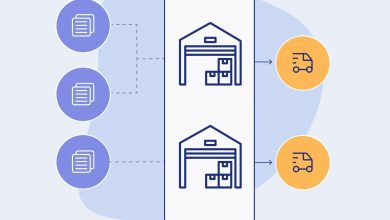Harnessing the Potential of IoT: Exploring the Internet of Things

Harnessing the Potential of IoT: Exploring the Internet of Things
What is the Internet of Things?
The Internet of Things (IoT) refers to the vast network of physical devices, vehicles, appliances, and other objects embedded with sensors and connectivity, enabling them to collect and exchange data over the internet. These devices can range from everyday objects like smart thermostats to industrial machinery used in manufacturing processes.
How Does IoT Work?
IoT devices have embedded sensors and actuators that allow them to collect data and perform specific actions. These devices are connected to the internet, allowing them to communicate with each other and with users through various communication protocols. The collected data can be analyzed, providing valuable insights and enabling automation and enhanced decision-making.
Applications of IoT
1. Smart Homes
From smart lighting systems to automated security cameras, IoT enables homeowners to control and monitor their homes remotely, making life more convenient and secure.
2. Healthcare
IoT has revolutionized healthcare, enabling remote patient monitoring, medication management, and even implantable devices that transmit critical health data to healthcare providers in real-time.
3. Manufacturing
IoT plays a vital role in optimizing manufacturing processes by collecting real-time data on machinery performance and productivity. This data can be used for predictive maintenance, reducing downtime and enhancing efficiency.
4. Transportation and Logistics
IoT is transforming the transportation industry, enabling real-time tracking of assets, optimizing routes, and monitoring vehicle performance, resulting in improved logistics operations and reduced costs.
Benefits of IoT
1. Efficiency and Automation
By automating tasks and collecting data, IoT can streamline processes, reduce human error, and improve overall efficiency.
2. Cost Savings
IoT-enabled systems can help businesses identify cost-saving opportunities, such as energy-efficient practices or predictive maintenance, leading to significant savings in the long run.
3. Enhanced Decision-making
With access to real-time data and analytics, businesses can make informed decisions quickly, improving productivity and competitiveness.
4. Improved Quality of Life
IoT applications in healthcare, smart homes, and wearable devices can enhance the quality of life by providing personalized and convenient solutions.
FAQs about IoT
1. Is IoT secure?
Security is a crucial aspect of IoT implementation. Device manufacturers need to prioritize security by implementing encryption methods, secure data transmission, and regular software updates to safeguard against potential cybersecurity threats.
2. Can IoT devices communicate with each other?
Yes, IoT devices can communicate with each other through wireless communication protocols such as Wi-Fi, Bluetooth, or cellular networks, forming a network of interconnected devices.
3. What are the privacy concerns related to IoT?
As IoT devices gather vast amounts of data, privacy concerns arise. It’s essential to ensure that personal data collected by IoT devices is protected, and strict privacy policies are in place to govern data usage.
4. Is IoT only for large businesses?
IoT is not limited to large businesses. Small businesses and even individuals can harness the power of IoT to improve efficiency, reduce costs, and enhance their lifestyles.
In conclusion, the Internet of Things has immense potential for transforming various industries and our everyday lives. From smart homes to healthcare and manufacturing, IoT is revolutionizing the way we interact with our environment. By understanding the applications, benefits, and addressing security and privacy concerns, businesses and individuals can fully harness the potential of IoT and propel themselves into a connected future.



